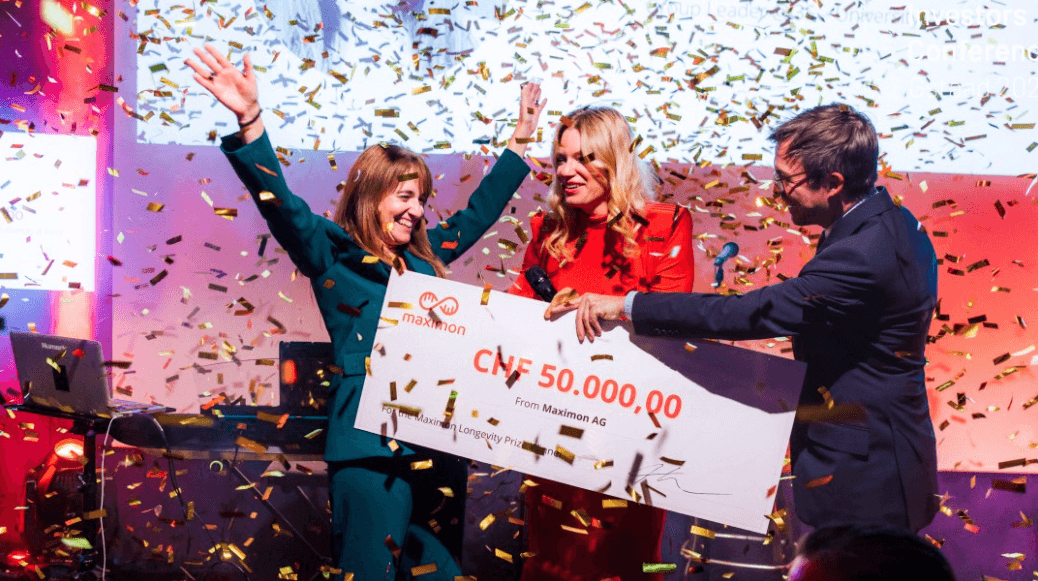As this market evolves, it invites a deeper analysis of its components — ranging from high-level investor conferences and secretive scientific advancements to rapidly growing medical spas — all of which reflect broader societal shifts towards health optimization and life extension.
The longevity retreat market is not just a playground for the ultra-wealthy but a hotspot for cutting-edge research and ethical debates. It encapsulates a unique blend of opportunities and challenges that are shaping the future of health care, lifestyle, and aging. The allure of extending life has never been more palpable, with conferences drawing scientists and investors alike to discuss, fund, and experiment with the latest advancements in the field. This transformation is driven by the capability of AI to process vast amounts of data generated by wearable devices in real-time, enabling the delivery of personalized health insights directly to the user. Such advancements not only enhance the user experience by providing actionable health data but also have the potential to revolutionize the healthcare industry by facilitating early diagnosis and the prevention of diseases.
This analysis delves into three critical aspects of the longevity retreat market: exclusive investor conferences that highlight both the promise and the hype of longevity science; the secretive and ethically charged world of immortality science; and the booming business of medical spas that blend clinical expertise with luxury spa experiences. Each of these facets offers a unique lens through which to view the market’s growth, its driving forces, and the ethical considerations it brings to the fore.
As we explore these themes, we also consider the broader implications of such investments on public health, regulatory frameworks, and societal norms regarding aging and wellness. We’ll unpack the layers of this intricate market, offering a comprehensive overview that balances the scientific potential with practical and ethical considerations.
Inside the Billion-Dollar Meeting
The Longevity Investors Conference, hosted in the opulent Swiss ski resort of Gstaad, offers a rare glimpse into the world where high net worth individuals converge with groundbreaking scientific ventures aimed at life extension. This exclusive event, characterized by its luxurious setting and steep entry fees, underscores the burgeoning intersection of wealth and health, particularly the quest for prolonged vitality and the potential immortality of the ultra-rich.
The conference attracts a cadre of scientists, biotech entrepreneurs, and, predominantly, investors, each with the financial clout to significantly influence the direction of aging research. With tickets priced at $4,500, access is limited to those who can afford not only the cost of entry but also significant potential investments in longevity projects. The attendees include a mix of seasoned investors and enthusiastic proponents of life extension, many of whom engage in various forms of self-experimentation, from taking unproven supplements to partaking in rigorous, often speculative health regimens.
The scene at the conference is a vivid tableau of modern-day alchemy: on one hand, there are legitimate, scientifically-grounded discussions about interventions like rapamycin and senolytics, which have shown promise in extending life spans in controlled laboratory settings. On the other, there exists a swirl of hype around less proven, market-ready solutions that capitalize on the desires of those seeking to outpace death. This spectrum of science and speculation is a key feature of the event, reflecting a broader theme in the longevity market, where immense hope is often shadowed by hype.

Throughout the conference, a critical issue emerges—the ethical dimensions of funding. The vast sums poured into longevity research often come from sources that could be considered controversial, if not ethically dubious. This raises significant questions about the sustainability and ethical foundations of relying on such investments to drive scientific advancements. The conference exemplifies this with its high-profile attendees and sponsors, some of whom are entangled in ethical controversies, yet remain pivotal to the financial viability of longevity research.
Moreover, the conference also serves as a cultural and social touchstone for the attendees, many of whom see longevity not just as an investment but as a personal crusade against the inevitability of aging. It is not uncommon to see these wealthy patrons partaking in the same longevity workouts and dietary regimens they are funding. This blurring of lines between personal and financial investment in longevity is a defining characteristic of the event.
One of the darker undertones of such gatherings is the inherent exclusivity and potential to widen societal divides. As cutting-edge health solutions and longevity strategies are showcased, they remain accessible primarily to the wealthy, potentially exacerbating health disparities between different socioeconomic groups. This exclusivity prompts a critical examination of who benefits from advances in longevity science—a question that resonates throughout the conference.
Beyond the immediate business and health impacts, there are profound societal, ethical, and philosophical questions. How will extended life spans affect global demographics, economies, and social structures? What are the long-term environmental impacts of a significantly longer-living population?
Read the full article here.
Inside the Secretive World of Immortality Science
This exploration unveils the secretive and often controversial science of anti-aging and life extension, an area that continues to captivate billionaires and researchers alike with the promise of defying death.
Through an analysis of practices, personalities, and the capital driving these initiatives, the article sheds light on the complex ethics and potential societal impacts of pursuing eternal life.
The narrative centers around Bryan Johnson, a multimillionaire who has openly dedicated his fortune and physical being to anti-aging experiments. Johnson’s story exemplifies the extreme end of immortality science where immense personal and financial resources are poured into experimental treatments. His regimen includes a range of interventions, from gene therapies to daily supplements, all rigorously monitored to track their effectiveness. Johnson, a figure both criticized and lauded for his methods, embodies the blend of entrepreneur and guinea pig, demonstrating the lengths to which individuals are willing to go to push back against the natural aging process.

This tale of personal endeavor is set against a broader backdrop of a scientific community that operates largely behind closed doors, with significant research guarded by nondisclosure agreements and shrouded in secrecy. This opaqueness is not just a byproduct of competitive advantage but a necessary shield in a field where the stakes are incredibly high—both scientifically and ethically. The article discusses the reluctance of many researchers to engage with the media, a hesitation rooted in the fear of overselling unproven theories or, worse, encouraging unregulated self-experimentation among the general public.
Moreover, the involvement of high-profile investors like Jeff Bezos and Peter Thiel highlights the influx of private capital that fuels this quest for longevity. This funding is crucial as it supports a range of research pathways, from the relatively well-understood to the highly speculative. The scale of investment reflects a growing trend among the tech elite to bank on biotechnological solutions that promise to extend life spans significantly. However, this influx of capital also raises questions about the direction and priorities of research, particularly regarding its focus on treatments that may only be accessible to the wealthiest.
Read the full article here.
Global Medical Spa Market Report
The third article provides a comprehensive analysis of the global medical spa market, which is projected to reach a substantial valuation of USD 59.4 billion by the year 2033, growing from USD 17.2 billion in 2023. This remarkable growth, marked by a compound annual growth rate (CAGR) of 13.2%, encapsulates a burgeoning industry at the intersection of healthcare, wellness, and aesthetics. The surge in market value is propelled by an increasing consumer demand for non-invasive treatments that not only enhance physical appearance but also promote health and well-being.
Medical spas, or medispas, represent a hybrid between traditional day spas and medical clinics, offering a blend of medical procedures typically performed in a doctor’s office with the relaxing experience of a spa. Services offered range from anti-aging treatments like Botox injections and chemical peels to more advanced procedures such as laser hair removal and fat-freezing technologies. The article outlines how these establishments are particularly attractive to consumers seeking rejuvenative and therapeutic treatments without the formality and environment of traditional medical settings.

The growth of the medical spa market is closely tied to several key factors. First, there is an evident rise in wellness awareness among consumers globally, who are increasingly seeking preventive treatments and interventions that combine health benefits with cosmetic improvements. This trend is further supported by technological advancements in non-invasive techniques, which have made treatments more accessible and less painful, with minimal recovery times compared to traditional surgeries.
Regulatory frameworks also play a significant role in shaping the market dynamics. The article discusses how stringent regulations and standards ensure that these facilities maintain a high level of safety and efficacy in the treatments offered. Compliance with these regulations not only helps in building consumer trust but also elevates the overall standard of the services provided, contributing to the industry’s growth.
The market report segments the medical spa industry by services, age groups, gender, and types of service providers. Facial treatments dominate the service segment, reflecting the high demand for skin rejuvenation and anti-aging solutions. The adult demographic constitutes the largest age group frequenting medical spas, driven by an increasing focus on anti-aging and body contouring treatments. Women make up the majority of the clientele, although there is growing interest from men, reflecting broader shifts in cultural attitudes towards male cosmetic care.
Geographically, North America leads the market, attributed to its high wellness tourism expenditure and a robust consumer base seeking anti-aging solutions. The region’s dominance is supported by a well-established healthcare infrastructure and a strong presence of leading medical spa chains. However, the Asia-Pacific region is expected to witness significant growth, driven by increasing disposable incomes and a growing acceptance of cosmetic treatments.
The competitive landscape of the medical spa market is marked by the presence of both large chains and small, specialized clinics, with mergers and acquisitions being common as companies strive to expand their market reach and service offerings. Innovations in treatment technologies and marketing strategies are crucial for companies to distinguish themselves in this highly competitive environment.
Read the full article here.
Final Thoughts
The longevity retreat market, as explored through its diverse segments — exclusive investor conferences, secretive immortality science, and flourishing medical spas — presents a compelling tableau of opportunities and challenges for investors.
Each segment not only contributes to the market’s growth trajectory but also highlights the nuanced interplay between innovation, consumer demand, and ethical considerations. As this market continues to evolve, it offers a unique vantage point from which to understand and influence the future of health, wellness, and aging.
For those looking to allocate resources in the longevity retreat market, the path forward involves a blend of strategic investment, ethical consideration, and market insight. The potential for substantial returns exists, but so does the responsibility to foster a market that contributes positively to societal health and well-being. Investors are encouraged to look beyond the immediate financial metrics and consider the wider impact of their investments.
The longevity market is not just shaping the future of individual health but also the paradigms of how we age as a society.
In conclusion, the longevity retreat market is poised at the intersection of innovation, luxury, and ethics. The decisions made today by investors will ripple through future generations, influencing not only market dynamics but also the ethical landscape of aging research. As we continue to explore and expand in this exciting field, let us strive for a balance that respects both the potential for profit and the imperative for good.
“Life is about the management of energy, where you place your attention, is where you place your energy.”
Dr. Joe Dispenza
Top Longevity Reads
- Q2 2023: Longevity Investment Report (Longevity Technology)
- AI in Life Extension: From deep learning to superintelligence (ResearchGate)
- Report: AI and Longevity (MIT)

